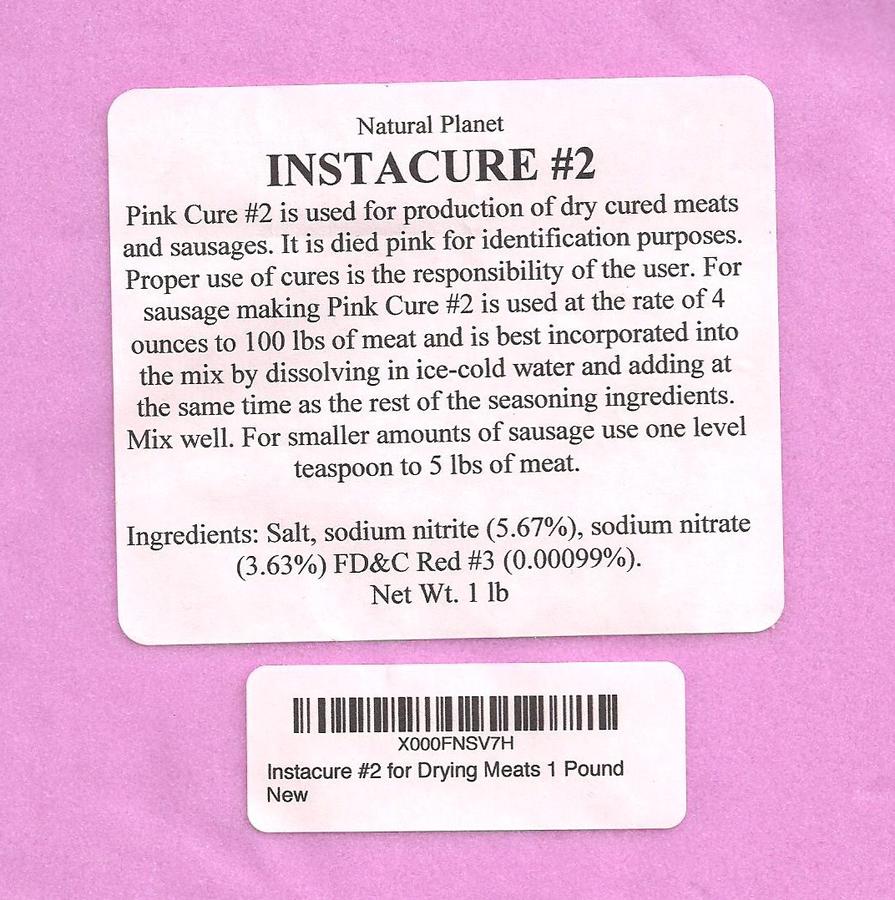I think you are using the wrong cure for the method you chose... Also.... meat aging, when it applies to cures, is done before it is cooked...
...click on pic to enlarge....
Rick (NEPAS) posted this recently in another thread here.
CURES - Cures are used in sausage products for color and flavor development as well as retarding the development of bacteria in
the low temperature environment of smoked meats.
Salt and sugar both cure meat by osmosis. In addition to drawing the water from the food, they dehydrate and kill the bacteria that make food spoil. In general, though, use of the word "cure" refers to processing the meat with either sodium nitrite or sodium nitrate.
The primary and most important reason to use cures is to prevent BOTULISM POISONING (Food poisoning). It is very important that any kind of meat or sausage that will be cooked and smoked at low temperature be cured. To trigger botulism poisoning, the requirements are quite simple - lack of oxygen, the presence of moisture, and temperatures in range of 40-140° F. When smoking meats, the heat and smoke eliminates the oxygen. The meats have moisture and are traditionally smoked and cooked in the low ranges of 90 to 185° F. As you can see, these are ideal conditions for food poisoning if you don't use cures. There are two types of commercially used cures.
Prague Powder #1
Also called Insta-Cure and Modern Cure. Cures are used to prevent meats from spoiling when being cooked or smoked at low temperatures (under 200 degrees F). This cure is 1 part sodium nitrite (6.25%) and 16 parts salt (93.75%) and are combined and crystallized to assure even distribution. As the meat temperate rises during processing, the sodium nitrite changes to nitric oxide and starts to ‘gas out’ at about 130 degrees F. After the smoking /cooking process is complete only about 10-20% of the original nitrite remains. As the product is stored and later reheated for consumption, the decline of nitrite continues. 4 ounces of Prague powder #1 is required to cure 100 lbs of meat. A more typical measurement for home use is 1 level tsp per 5 lbs of meat. Mix with cold water, then mix into meat like you would mix seasonings into meat.
Prague Powder #2
Used to dry-cure products. Prague powder #2 is a mixture of 1 part sodium nitrite, .64 parts sodium nitrate and 16 parts salt.
(1 oz. of sodium nitrite with .64 oz. of sodium nitrate to each lb. of salt.)
It is primarily used in dry-curing Use with products that do not require cooking, smoking, or refrigeration. This cure, which is sodium nitrate, acts like a time release, slowly breaking down into sodium nitrite, then into nitric oxide. This allows you to dry cure products that take much longer to cure. A cure with sodium nitrite would dissipate too quickly.
Use 1 oz. of cure for 25 lbs. of meat or 1 level teaspoon of cure for 5 lbs. of meat when mixing with meat.
When using a cure in a brine solution, follow a recipe.
DO NOT MIX EITHER CURE #1 OR CURE #2 WITH MTQ





